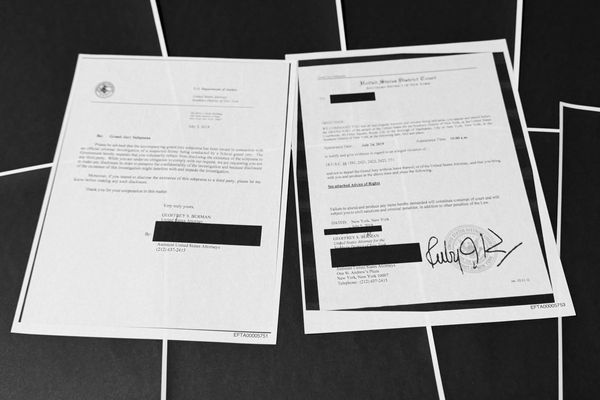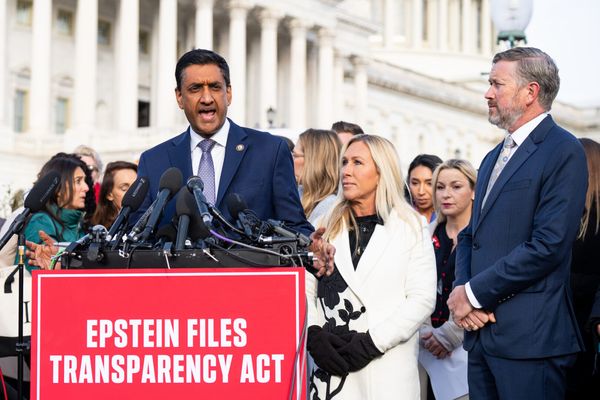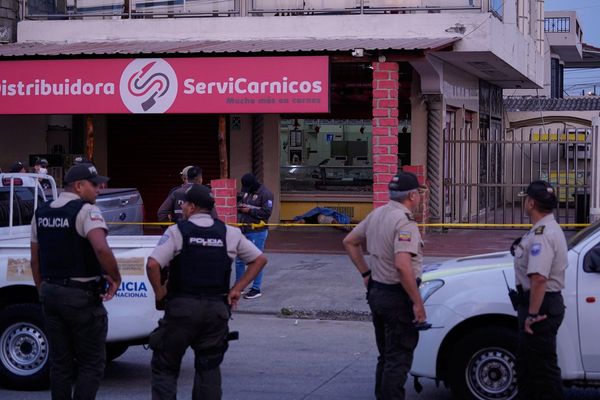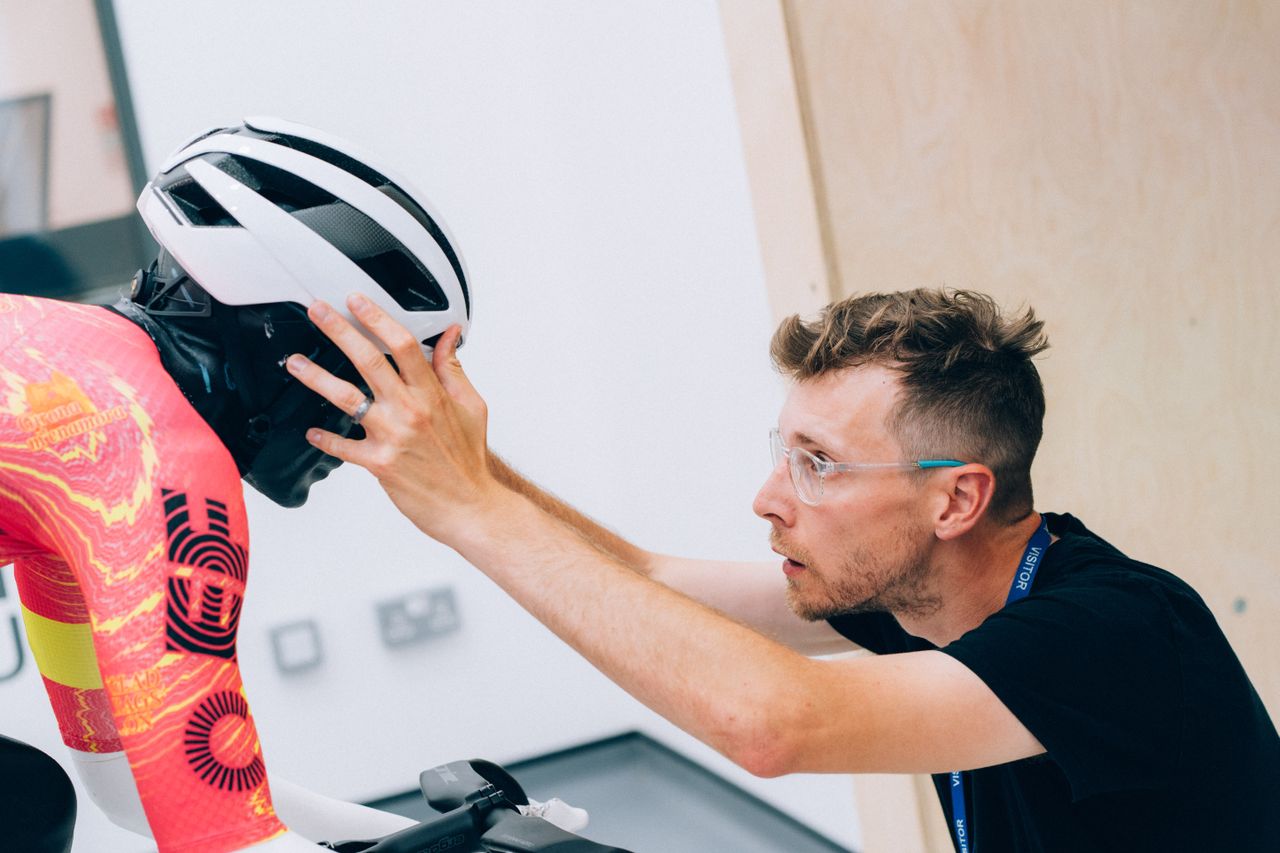
On June 27th, Will Jones and I went to what is fast becoming our second home, the wind tunnel at Silverstone Sports Engineering Hub, to test helmets. Again.
After loading up my trusty Peugeot to its proverbial gills with 47 different helmets at 4 AM, we headed out from Cyclingnews HQ on the two-hour journey east.
Of those 47 helmets, the vast majority were standard road bike helmets, comprising a mix of aero helmets, vented ones and all-rounders too. For a bit of fun, we also took along a handful of time trial helmets in reaction to the WorldTour's recent trend towards using them more in road stages. You can thank Visma-Lease a Bike, Casper Van Uden, and Uno-X for that.
But it's not the first time we've tested helmets. For our first solo wind tunnel venture (after we piggybacked on a Uno-X test in 2022), Tom Wieckowski and I tested 23 helmets in 2024, using Tom as the test dummy.
The data in that test is still valid, but I was very green to the world of wind tunnel testing, and I've learned a lot in the 14 months since, so I wanted to go back and do the test again. Bigger, better, and with more repeatability.
This time, not only did we test twice as many helmets, but we also tested using a 3D-printed mannequin made using a scan of a real rider. The reason for this is to ensure the bike and rider remain absolutely and utterly motionless, allowing us complete confidence that any differences being measured were differences in the helmet, rather than, for example, an accidental movement mid-test, or a slightly different hand position.
In our previous test, we were statistically confident to around 3.2 watts (we tested the Abus Gamechanger twice and found a 3.2-watt difference).
This means that although we trust the data coming out of the wind tunnel software, we have to assume that any result could be subject to a 3.2-watt difference higher or lower - a total swing of 6.4 watts. As a result, the 12.76-watt difference we found between best and worst could be as little as 6.36 watts, or as much as 19.16.
With the mannequin, our margin of error is much smaller, down to just 0.74 watts, meaning we can be much more confident in our results.
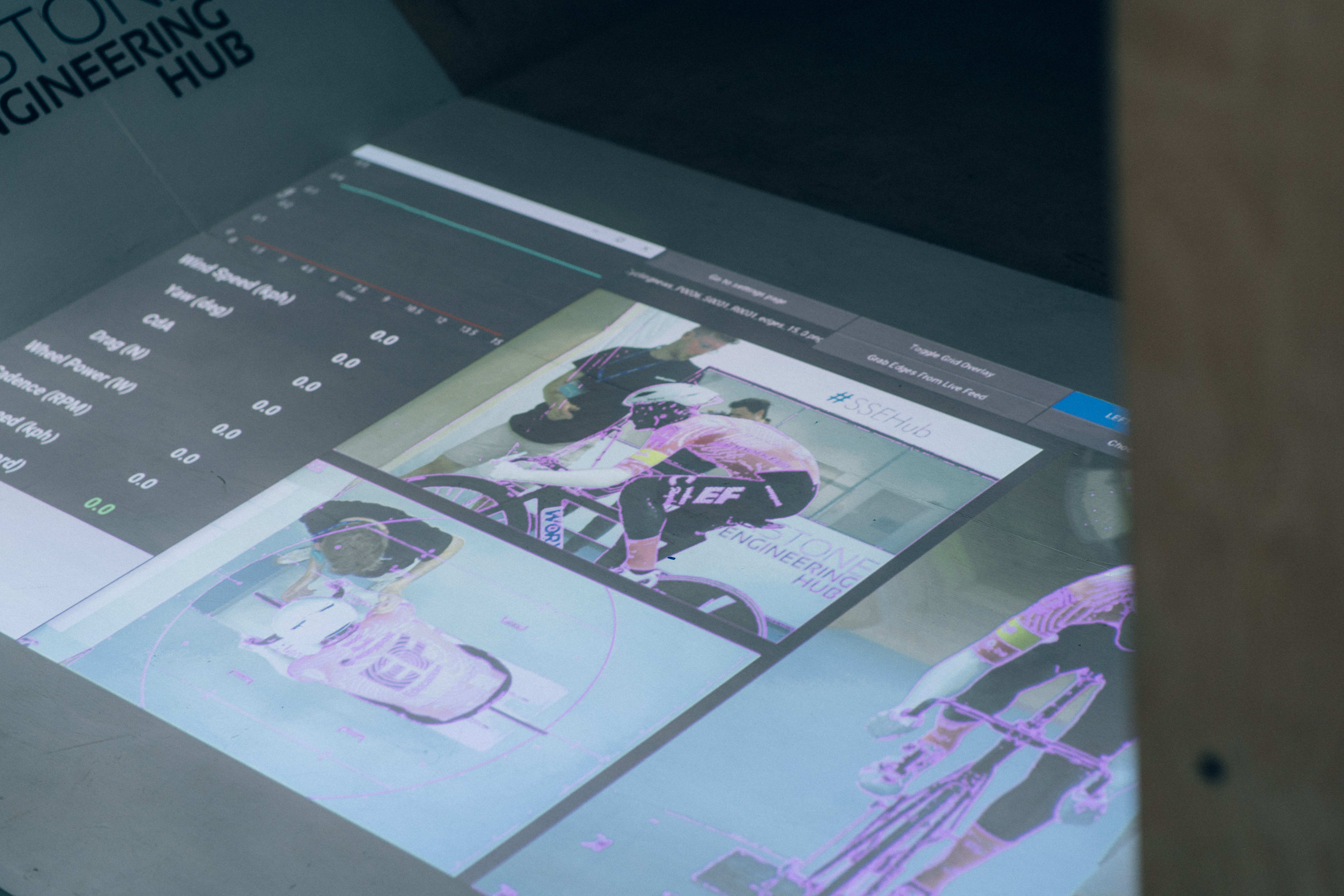
Who won?
Speaking of results: Yesterday, on the 21st of July, the results of our new test were published, finding the budget-friendly Van Rysel XCR time trial helmet to be fastest of all, while the Oakley Velo Mach (kindly loaned by our friends at Tudor Pro Cycling) took the title of the fastest traditional 'aero' road helmet.
If you want to read the full results, you can head over to our 2025 wind tunnel helmet test write-up, complete with the raw data from every helmet at every yaw angle. It also includes lots of very pretty, very useful graphs, calculations for the watts saved against a predetermined baseline helmet, and even a test at a faster speed for the 10 best road helmets.
We also tested different sizes of the same helmet, tidy straps versus poorly adjusted 'flappy' straps, and even the new Canyon helmet with that divisive Highbar strap.
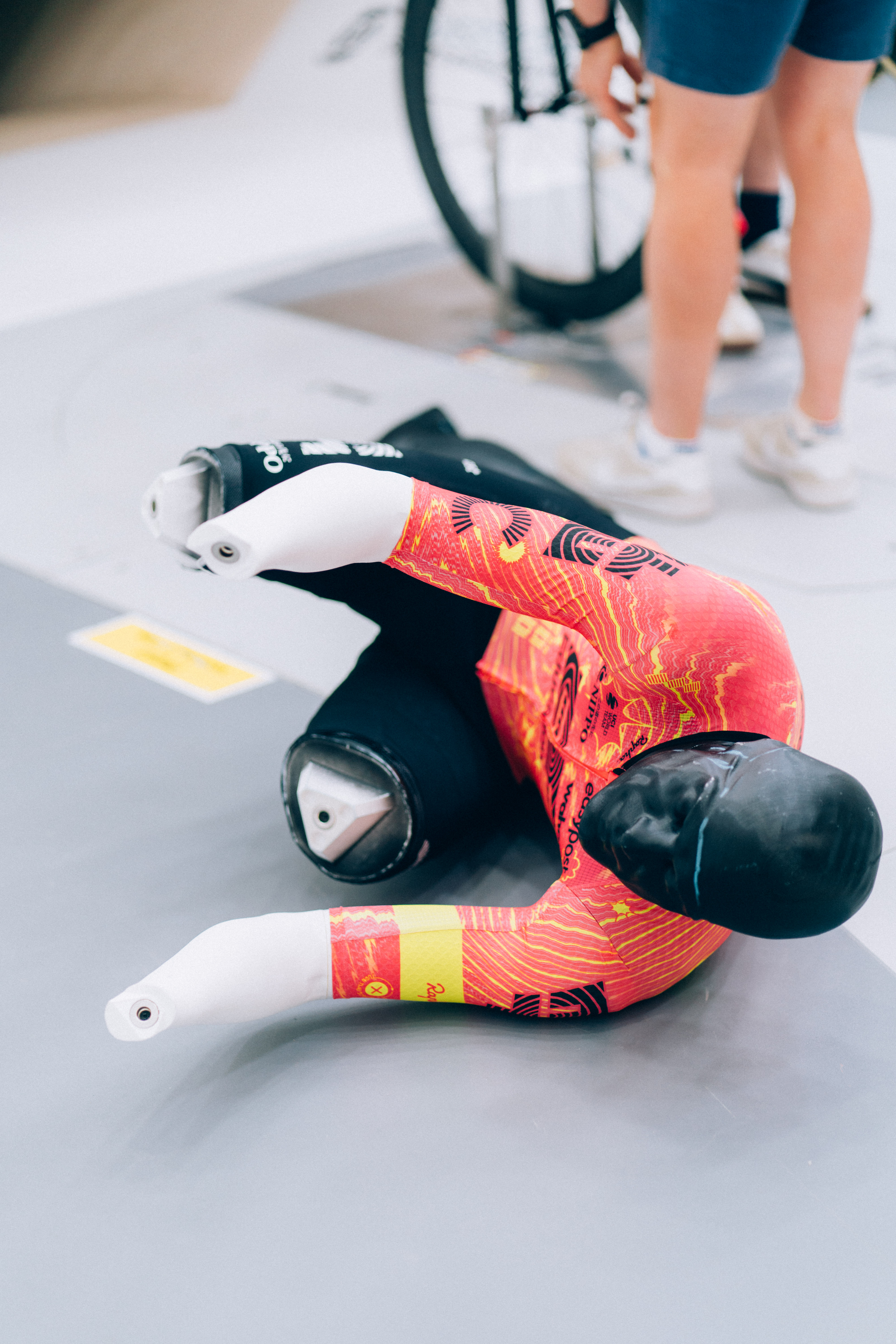
Database dreams
It's not just about the confidence interval, though. The other reason for doing the test again is long-term repeatability.
The results for each test were compared to those of the budget-friendly Abus Powerdome, and by using the SSE Hub's mannequin and bike, we can return in 2026, 2027 and beyond to repeat the test.
By that, I mean we'll keep hold of the Abus Powerdome and take it with us every time we test helmets, and always use it as the baseline to compare against.
Therefore, new helmets that haven't been launched yet, such as the new Met Trenta, Poc Cytal Lite, Ekoi Aerodinamica, and Sweet Protection Tucker III 2vi, all of which are currently being used at the Tour de France, can be tested next time we're there in the same way.
In time, I dream of building a database of helmets we've tested.
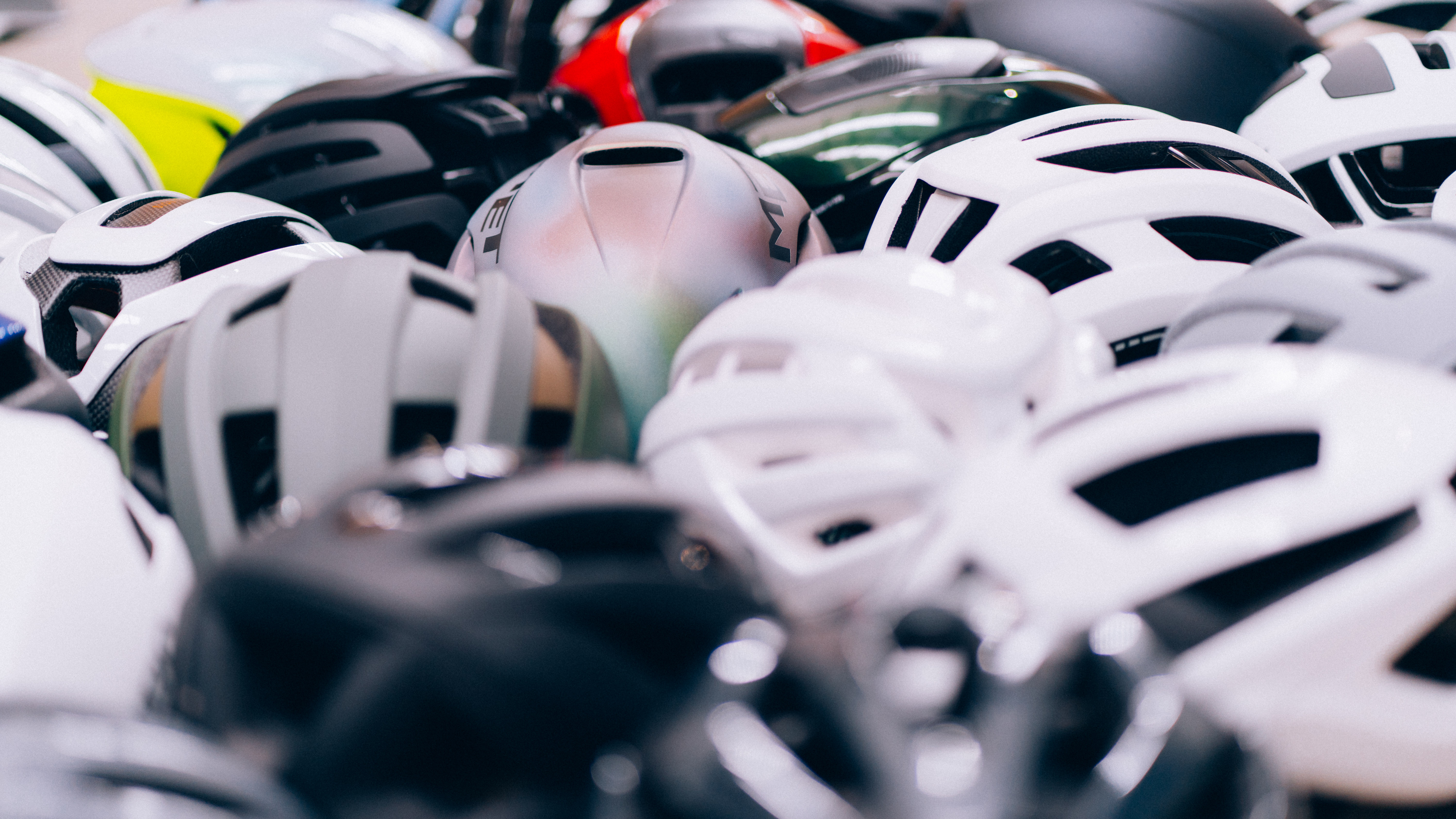
How you can help
Some of you might be saddened to see that the data is hidden behind a paywall, but before you leave, I'll take this opportunity to ask you to please consider subscribing to Cyclingnews and supporting the work we do.
If the test in intriguing and you'd consider spending 200-300 dollars / pounds / euros on a helmet upgrade to gain a handful of watts on the bike, then a few extra dollars / pounds / euros to see the data in full, helping to ensure you choose the best helmet, while also contributing to the data's creation, is surely good value.
These tests aren't cheap, either in time or money, and without our members, there's no way we'd be able to afford doing them.
We pay the standard hire rates for the wind tunnel, which is well into the thousands of pounds. Add to that the countless hours put in beforehand to ensure the helmets are all ready, and then the time to understand the data, generate the graphs, write the article, edit photos and video, and so on, and it's a huge investment to put each of these tests together.
I sound like I'm complaining, but far from it. I love doing these tests, and the feedback I get says our subscribers enjoy reading them.
We have the occasional request for sponsorship or product placement in the tests, which helps to generate a little more revenue, but each of those requests comes to me for approval.
For example, in this latest test, Rapha offered some paid product placement and provided a skinsuit for the mannequin to wear. Rapha doesn't make helmets (aside from a few collaborations with POC in years gone by) and we were planning to dress our mannequin in a skinsuit anyway. It made sense to accept.
If there's any chance that the agreement would be seen as biased, such as if Kask had offered to sponsor this test (they didn't), I would refuse. Even if the brand promised to remain hands-off, I would still refuse.
The impartiality and authenticity of these tests are the two most important factors to their success. That goes hand in hand with the support from our readers, so if you think you'll enjoy them or you want more of them, please support them. You can even email me with requests for what to test.
